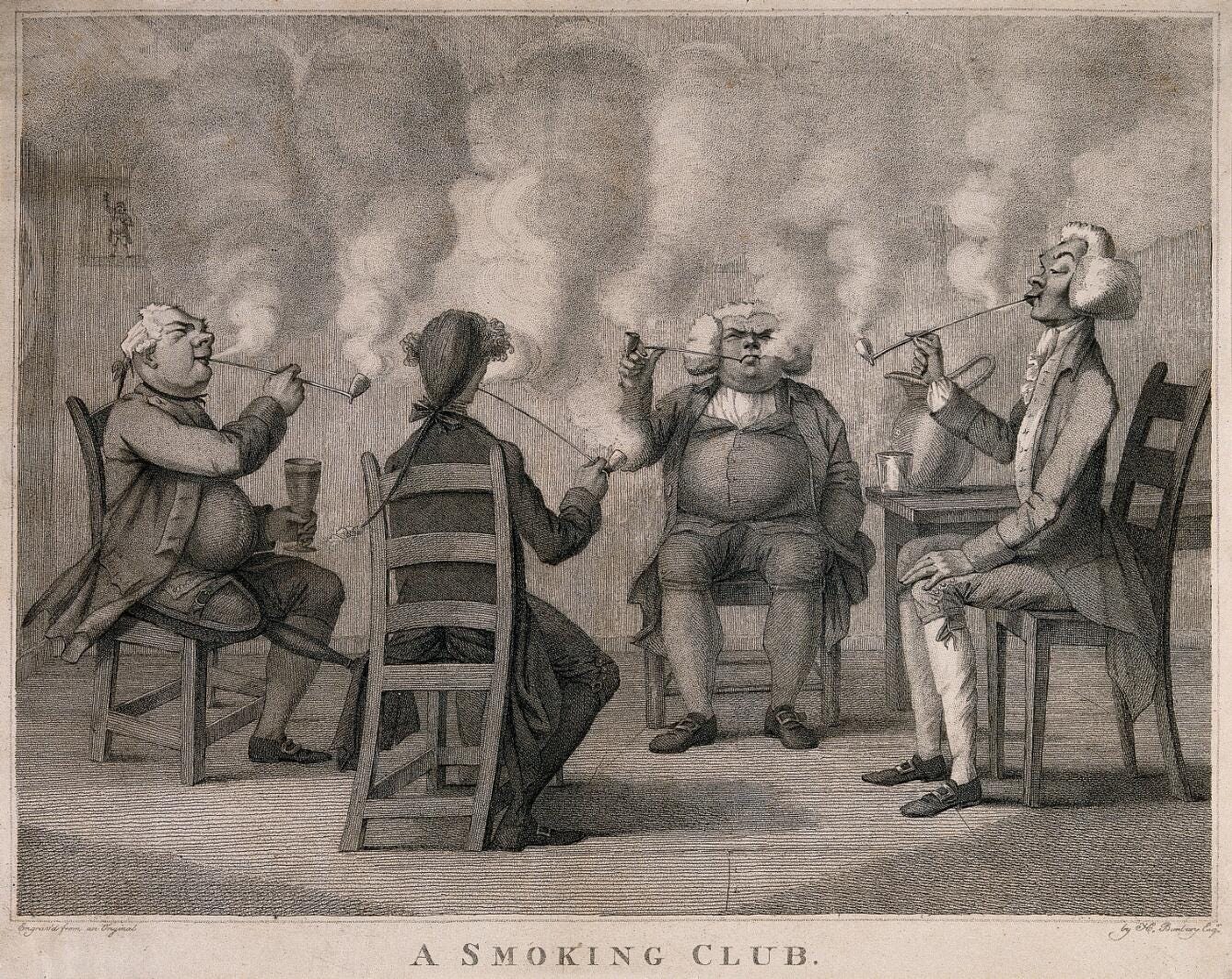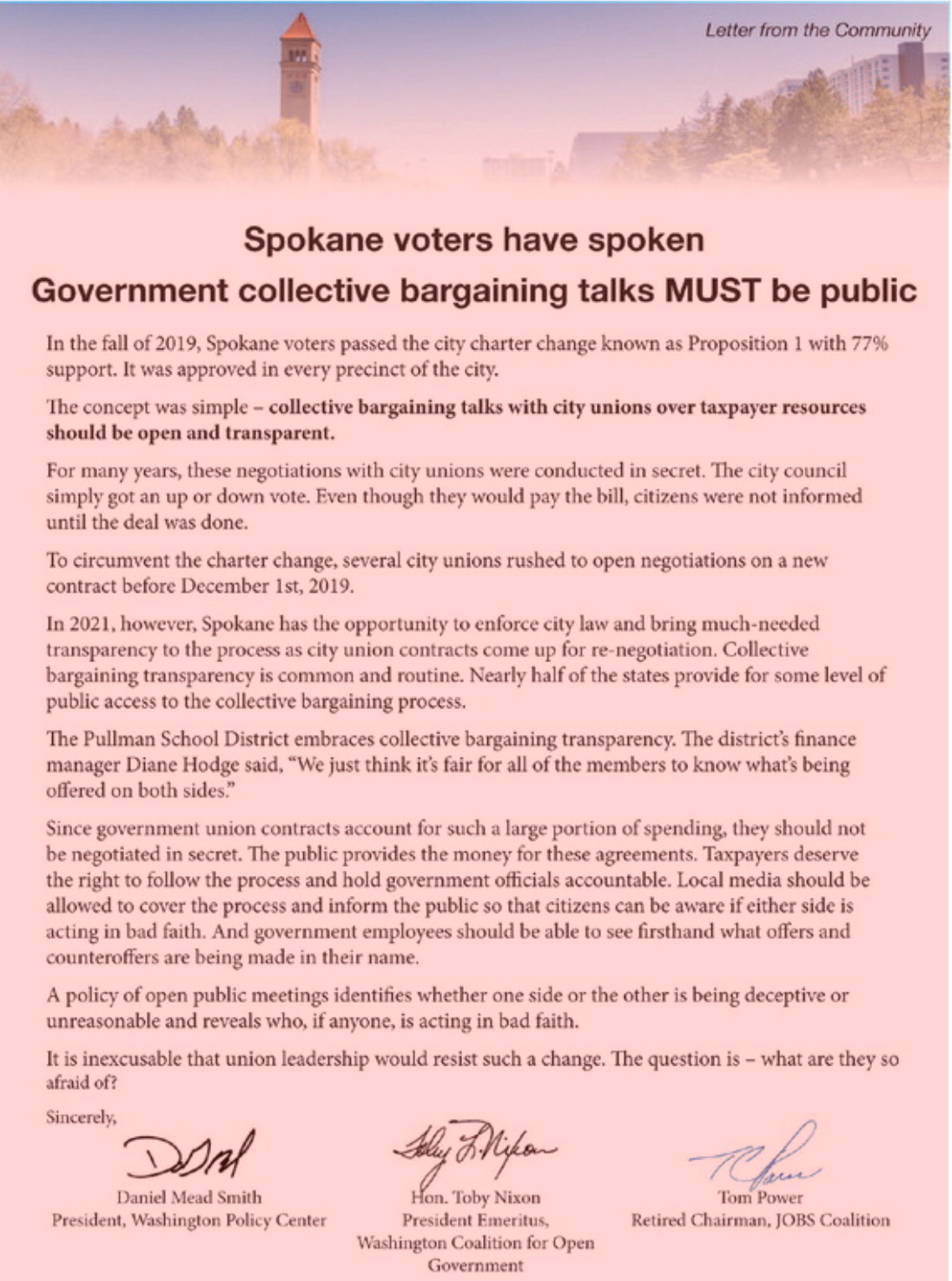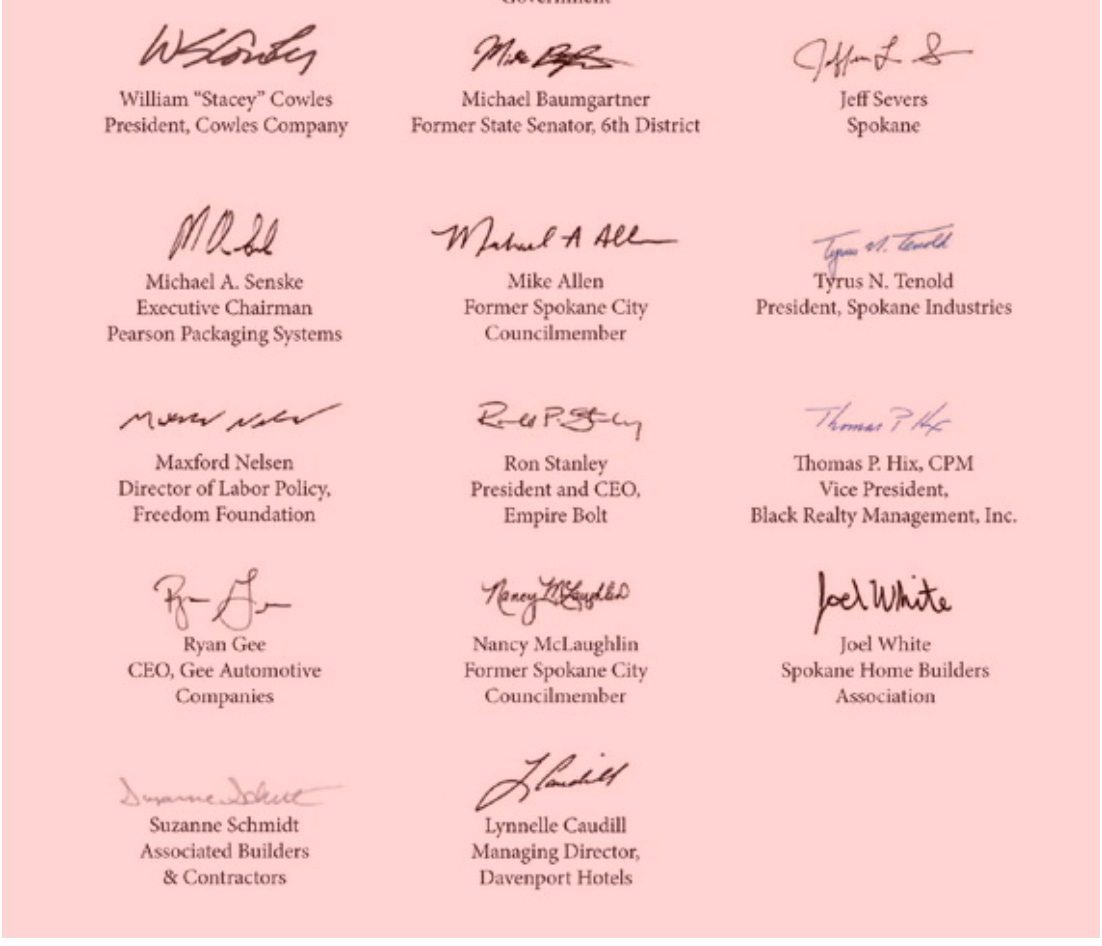It is getting harder to believe it isn’t really happening–and to deny what’s causing it
| Jerry LeClaireJul 7 |
The fires are starting again. Evacuation orders issued to households between Cheney and Spokane. Precipitation is nowhere in the forecast, the landscape is parched. The hay crop is a quarter of the usual. Hay prices are soaring. We take shelter in our homes trying to avoid the blazing sun and the highest temperatures ever locally recorded in an outdoor environment considered mortally dangerous.
Something is wrong. It is wrong where we live. It is not just some faraway glaciers melting. The problem has come home to roost. Politicians who ignore this reality ought to pay attention. (More on that in a later post.)
Doug Muder, the author of The Weekly Sift (highly recommended) writes of our plight in the Northwest to suggest this is all getting very real. I have reproduced Mr. Muder’s post from Monday, July 5 below. It is well worth sharing.
Keep to the high ground,
Jerry
Climate Change is Here
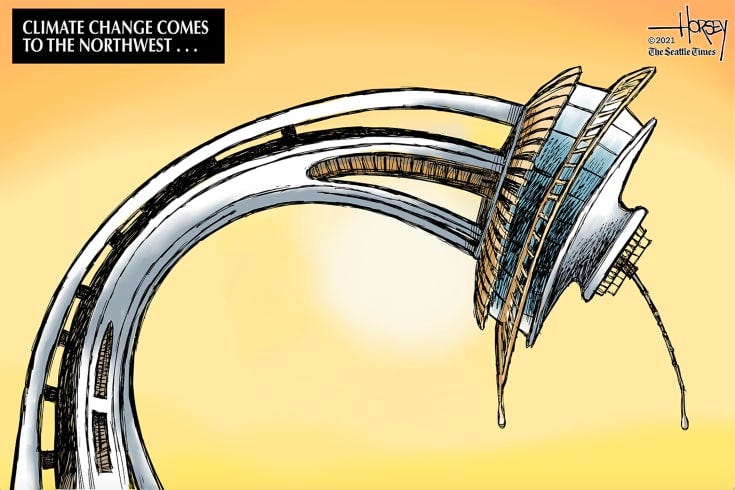
When it’s 116 in Portland and 108 in Seattle, something is wrong.
For a long time, you could only see global warming if you knew what you were looking for. It wasn’t something that announced itself in your everyday experience.
Wherever you might live, it continued to be warmer in the day and cooler at night, hotter in summer and colder in winter — the same as it ever was. Whether summers had been hotter or winters colder years ago was a topic for old people’s boring stories about the Blizzard of ’78 or the Drought of ’54.
You had to be a statistician — or trust statisticians whose work you couldn’t check — to get any coherent view of the trends in global temperature. Think of the millions of measurements, and thousands of adjustments to those measurements, necessary to produce a graph like the one below. Who made those measurements? Who compiled those statistics? Why should you trust them? If you had the resources and the will, you could find your own way to parse the data so that it said something different. Why shouldn’t you do that, or decide to trust somebody who did, rather than trust NASA or NOAA or some international consortium of scientists?
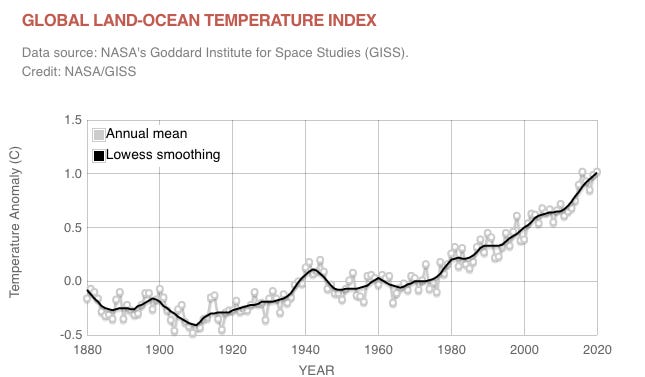
The situation was even worse if you tried to look to the future, because then you were dealing with computer models. What were they assuming? Who did the programming? Again, the graphs looked very impressive and scary. But if you didn’t want to believe them — and who did, really? — nobody could make you.
And without predictions decades into the future, climate change was no big deal. Maybe it was already a degree or two hotter than in your grandparents’ day, but so what? Life went on, people adjusted. The climate was always changing.
What it came down to, for a lot of Americans, was one more example of people with advanced degrees telling them what to do. And that might be fine if they were telling you to do something you want to do — like get a good night’s sleep, or spend more time in the sunlight. And it’s even OK if their advice is unpleasant, but matches your common sense — compound interest means you should start saving for retirement when you’re young, smoking isn’t good for you. But here the eggheads were telling you to stop driving and flying and running the air conditioner, or even to close down the mines your town depended on, the one that had employed your family for generations. And the evidence was all stuff you couldn’t touch: Look at this graph and don’t ask too many questions about how I made it, or else the world will be a hellscape after we’re all dead.
Americans already had religions based on things they couldn’t see that made threats and promises after death. They didn’t need another one.
And then visible things started to happen, maybe, sort of.
Right around the time Hurricane Katrina mauled New Orleans in 2005, you might think you were starting to see climate change in anomalous weather events. But what is “anomalous”, really? When Superstorm Sandy hit New York City in 2012, we all had a gut feeling that hurricanes aren’t supposed to go that far north. But weird weather events have been happening forever. What about the Great New England Hurricane of 1938?
The Midwestern floods of 2019 were so intense, and so close to previous major floods, that they drove the phrase “hundred-year flood” out of our vocabulary. Nobody knows what a hundred-year flood is any more. And sure, that’s strange, but is it proof? Maybe we’re just in some kind of weird flood cycle.
We got used to these kinds of arguments, to the point that they became almost ritualized: The weather would do something incredible — a big wildfire, an intense hurricane season, or a heat wave in Siberia — and somebody would immediately say: “See? Climate change.” But then somebody else would say, “You can’t really say that about one event. It could just be bad luck.” Then either people would start yelling at each other, or the conversation would bog down in the technicalities of probability — neither of which accomplished anything. Everybody continued to believe whatever they had started out believing.
The series of weird weather events should have chipped away at climate-change-deniers’ skepticism, but in fact it did the opposite. Once you’ve explained away Katrina and Sandy, it gets easier, not harder, to shrug off Harvey and Irma and Maria all happening the same year. The weather gets weird sometimes; that doesn’t mean the world is ending.
Even so, last year’s western wildfires were a little hard to account for. Not only were they record-breaking in terms of acreage and cost, but Portland suburbs had to be evacuated, Seattle had an air-quality emergency, and the smoke gave me colorful sunsets all the way out here in Massachusetts. And only a few months before, Australia had record-breaking fires of its own.
For decades, climate-change deniers have derided activists as “scare mongers” who made “apocalyptic” predictions. But you know what? Those fires in Australia looked pretty apocalyptic.

Still, people pointed to multiple possible causes for wildfires: over-development, say, or power lines. President Trump blamed bad forest management, echoing absurd suggestions he had made about raking in 2018.
Wade Crowfoot, California’s secretary for natural resources, pressed Mr. Trump more bluntly. “If we ignore that science and sort of put our head in the sand and think it’s all about vegetation management, we’re not going to succeed together protecting Californians,” he told the president.
This time, Mr. Trump rejected the premise. “It’ll start getting cooler,” he insisted. “You just watch.”
“I wish science agreed with you,” Mr. Crowfoot replied.
“Well, I don’t think science knows, actually,” Mr. Trump retorted, maintaining a tense grin.
Well, it’s a year later now, and guess what? It’s not getting cooler.
Monday, it was 116 in Portland, Oregon, beating the previous all-time record (set in 1965 and 1981) by nine degrees. The heat wave covered the entire Northwest: 108 in Seattle, 109 in Spokane, 116 in Walla Walla, and 117 in Pendleton. Strangest of all was the small town of Lytton, British Columbia, where the heat wave peaked at 121 degrees, an all-time record for the nation of Canada.
121 in Canada. That’s not right.
Heat and drought have set the stage for another bad wildfire season, and it’s already starting in Canada and Washington and Oregon and Idaho and California. On the other side of the country, the Atlantic is already up to its fifth named storm of the season, Elsa. We’ve never gotten to E this fast before, and the previous record was set last year.
It’s happening. Global warming is here. It’s not just statistics and computer models any more. You can see it. You have to work not to see it.
That doesn’t mean things go straight to hell from here. The western heat wave finally broke. Today’s predicted high in Portland is 86. Next winter, it will get cold in lots of places, and if some oil-financed politician wants to bring a snowball to the floor of the Senate, he’ll be able to find one. “Damn,” one cold person will say to another, “we could use a little of that global warming about now.”
And while the quantity of carbon dioxide in the atmosphere will continue to go up every single year, not every year will be hotter than the previous one. 2016 and 2020 were the hottest years on record, but so far 2021 isn’t quite so bad, at least not globally. Fossil fuel spokesmen, including the politicians the oil companies pay for, will tell you that means it’s all over. Global warming ended in 2020, they’ll say, just like they said it ended in 1998.
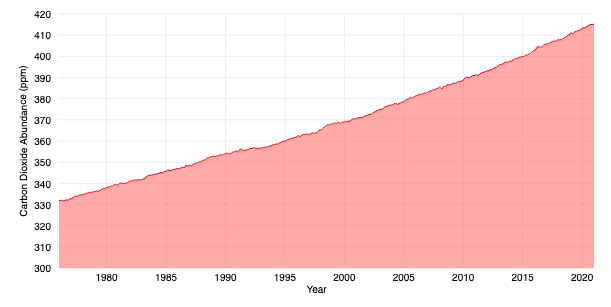
Don’t believe them. Believe what you can see.
For a long time, believing what the scientists said about the climate required trusting in the invisible, and the future horrors they predicted seemed too far away to take seriously.
Not any more. Global warming is here. It’s visible. It was 116 in Portland Monday.
That’s not right.
